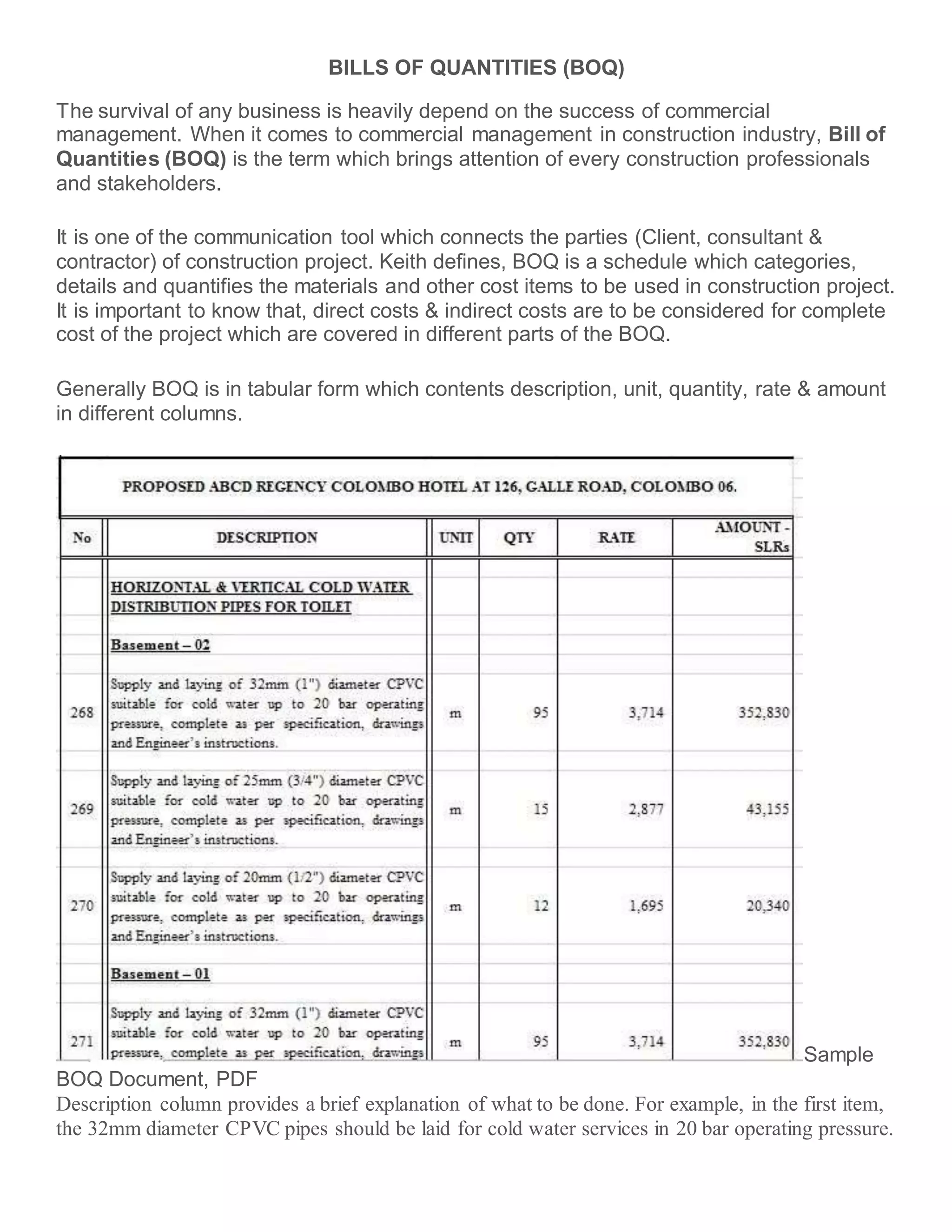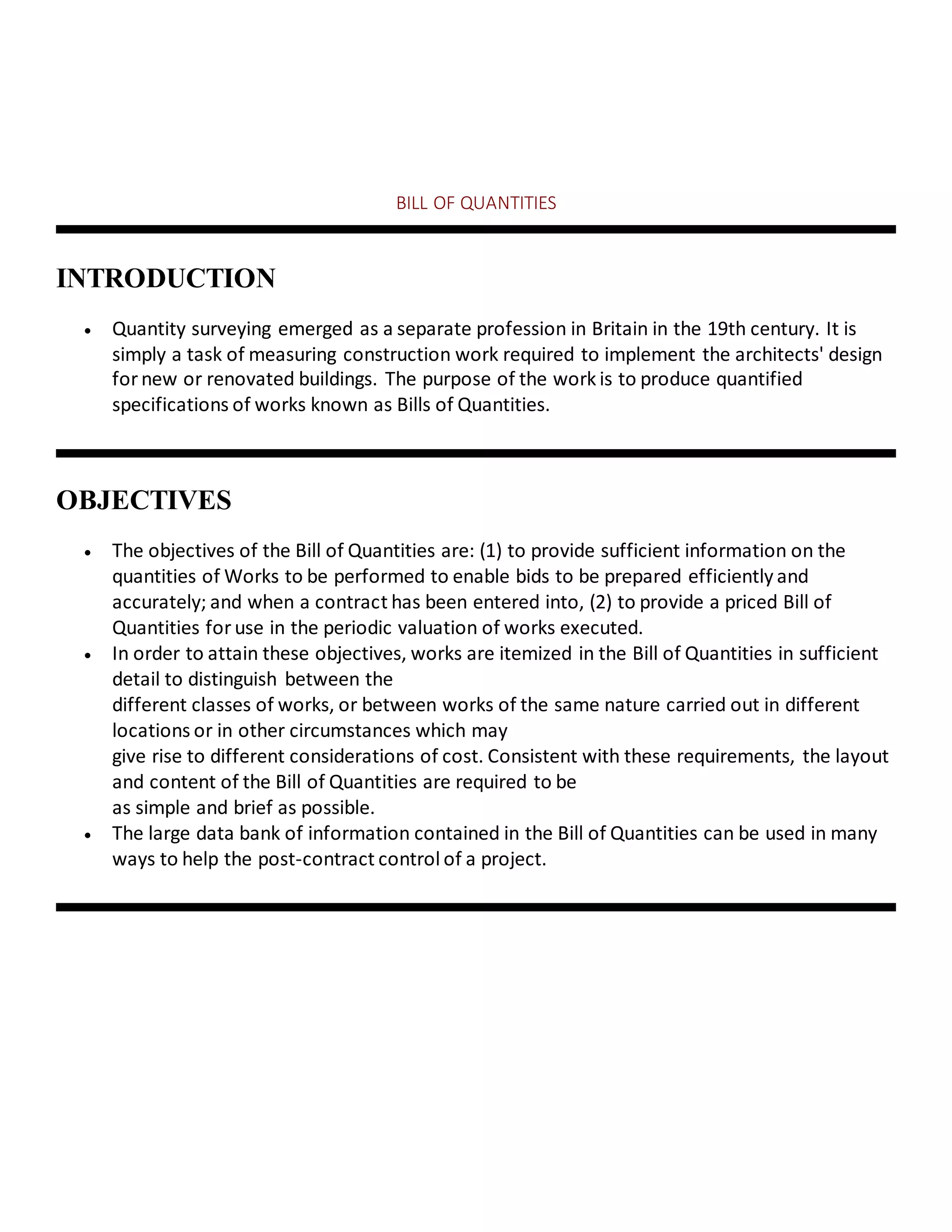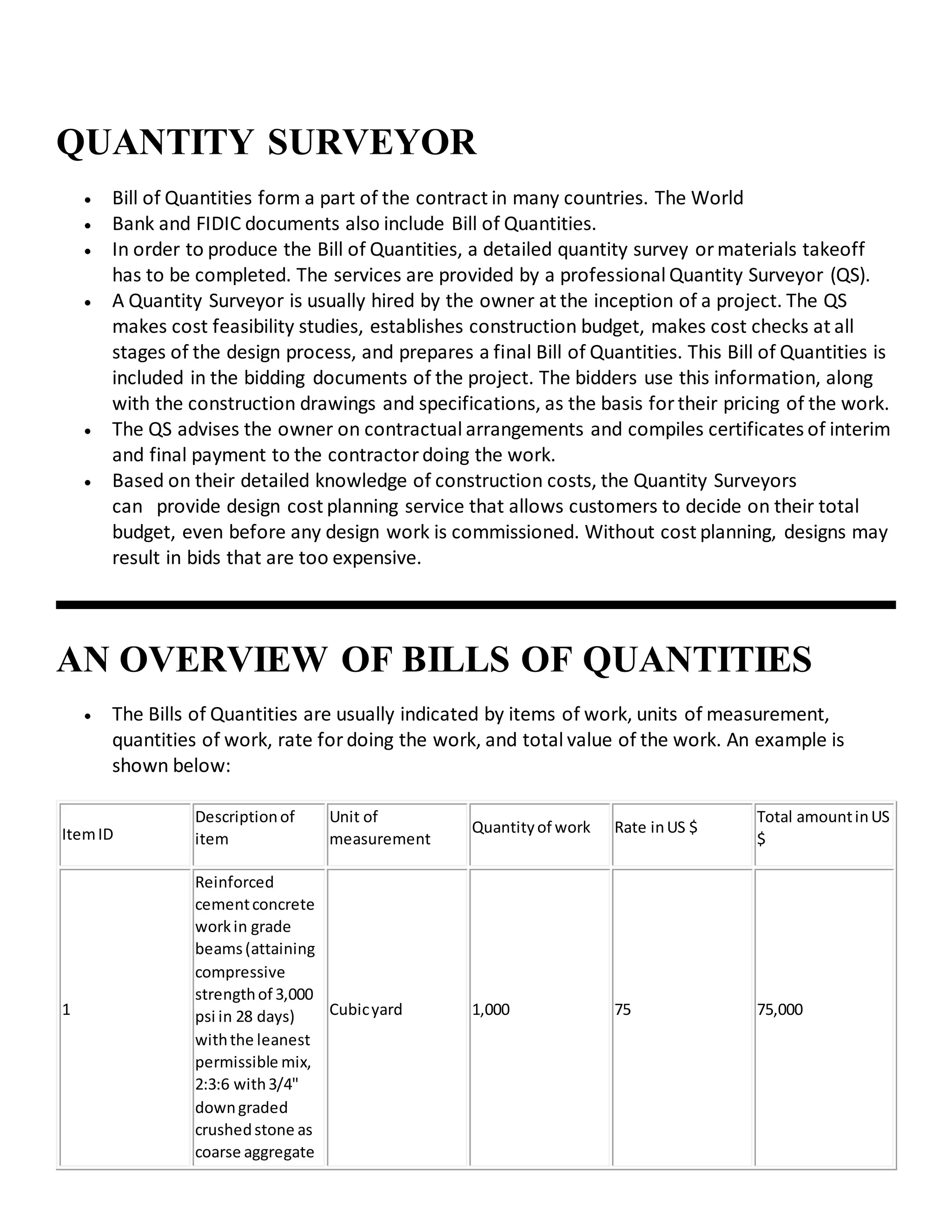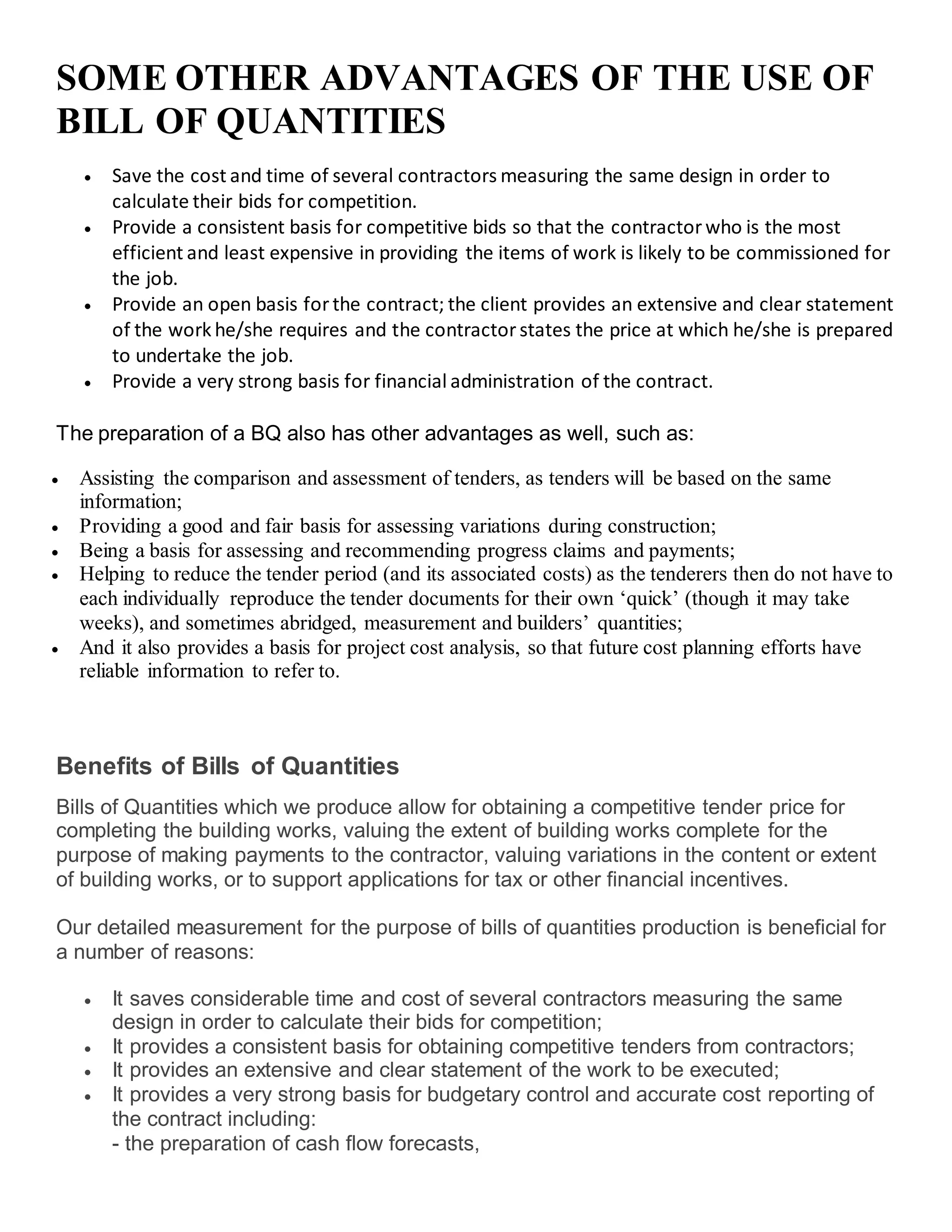The document discusses Bills of Quantities (BOQ), which are schedules that categorize, detail, and quantify materials and costs for construction projects. A BOQ is an important communication tool between clients, consultants, and contractors that provides estimated costs, defines the scope of work, and establishes a basis for cost valuation and contract payments. It generally includes item descriptions, units, quantities, rates, and amounts in a tabular format. BOQs help standardize bidding, financial administration, and valuation of variations throughout the project lifecycle.







